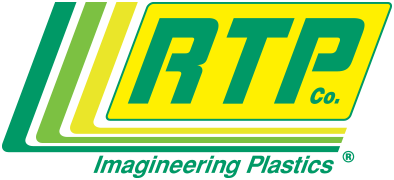To begin the process of gaining UL Recognition for a custom compound, please contact an RTP Company sales representative for your area. The Find Your Representative section of this web site can assist you in locating an RTP Company sales engineer or business manager.
1. Communication between RTP Company and customer
- Determine flammability requirements for the application.
- Determine other UL requirements for the application, (See #3 below).
- Ensure chosen material is appropriate for the application.
2. Samples are prepared by RTP Company and submitted to UL
3. Samples tested
- Samples are tested by UL per UL94
- Flammability (5VA, 5VB, V-0, V-1, V-2, HB)
- Samples are tested by UL per UL746A (a required by customer’s application)
- D-495 (ASTM D-495 arc resistance)
- CTI (comparative tracking index)
- HAI (high amp arc ignition)
- HVTR (high voltage arc tracking rate)
- HWI (hot wire ignition)
- HVAR (high voltage arc resistance to ignition)
- Volume resistivity
- Dielectric strength
- Impact strength
- Tensile strength
- Flexural strength
- Heat deflection temperature
- Dimensional stability
- Composition analysis
- Infrared spectroscopy (IR)
- Thermogravimetric analysis (TGA)
- Differential scanning calorimetry (DSC)
- Sample are tested by RTP Company per UL746B (as required by customer’s application)
- Samples are heat aged at temperatures determined by the type of material being tested
- Samples are pulled at periodic intervals specified by UL
- Samples are tested for the following properties
- Dielectric strength
- Impact strength
- Tensile strength
- Flammability
- Failure times determined
- Data analyzed by UL
- Relative thermal index assigned (also referred to as Continuous Use Temperature)
4. Material is Recognized
- Included in “Recognized Component Directory.”
- Yellow Card issued.
- Follow-up procedure established.




